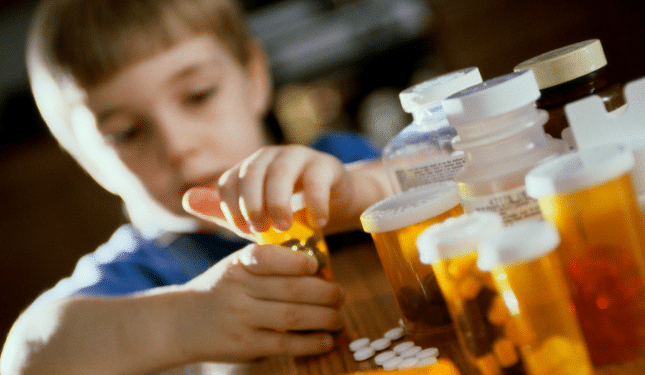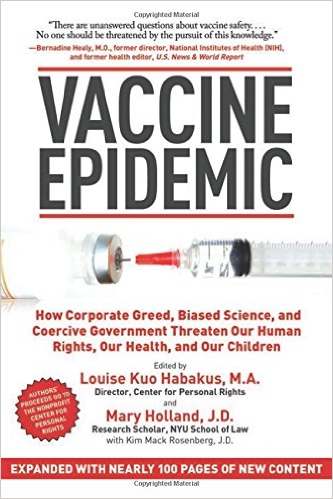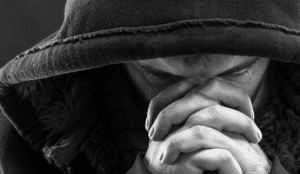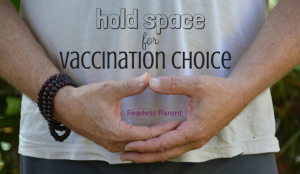Editor’s note: We acknowledge with great compassion that this is a particularly challenging topic for the many families who make the difficult decision to put their children on psych meds. We believe all parents must be given the most accurate information about these medications, including side effects, the necessity of properly tapering off medication, the lack of safety testing on children and young adults, the institutional incentives for medical doctors, educators, and others to advocate their use, and the availability of effective non-pharmaceutical avenues of treatment that can address root causes of mental illness and behavioral problems. Kelly is a holistic, board-certified psychiatrist. This blog is not medical advice and does not replace consultation with a qualified medical professional of your choosing.
by Kelly Brogan, MD and Louise Kuo Habakus
School should not be a place of danger. We can all agree on that premise, and we can debate how and why things have gone awry.
Is it media? Bad parenting? Access to weapons?
We have our own theories about what is driving bad behavior and mental illness in the pediatric population. It is surely tied to the effects of our environment and our food system on our pregnancies and developing minds. We are writing here, today, for a specific reason.
Psych drugs into the uncomfortable limelight
Antidepressants and stimulant medications are prescribed with increasingly lower thresholds, no standard of medical diagnosis, and without independent safety or efficacy data. In fact, what is known about their risks, has been uncharacteristically supported by the FDA in the form of black box warnings of impulsive morbid violence (suicidality) for teens and children prescribed these medications.
As of this 2010 paper, the FDA had received more reports of violence associated with SSRI antidepressants than any other medication, with Prozac and Paxil leading the pack.
All antidepressant inserts carry the warnings of activation, impulsivity, insomnia, and mania. The Diagnostic and Statistical Manual of Mental Disorders (DSM) itself and the American Pyschiatric Association Practice guidelines document a spectrum of behavioral side effects that result directly from antidepressant treatment.
Given these concerns, the only reason this would be considered an appropriate intervention is because the doctor recommends it.
Why are they doctor recommended?
During my (Kelly’s) residency at Bellevue/NYU in NYC, I recall being taught that the “reason” for suicidality in teens who take antidepressants is that they are just energized to act on previously existing impulses, aka, it’s the illness itself, not the med. I can hear her colleagues now:
“Well, you have to control for confounding by indication – these people who are prescribed these medications are more likely to be unstable and to do these things.”
The truth is that, since its introduction in 1988, reports of Prozac-induced violence have prompted modification of the label and package insert to include “violent behavior” and “suicidality” just two years later. There are several controlled trials in the adolescent population that have demonstrated a two- to four-fold increased incidence of self harm behaviors and development of manic spectrum symptoms, which include impulsivity and bizarre and/or volatile behavior.
I was taught that, when patients experienced symptoms of insomnia, increased energy, and impulsivity after starting an antidepressant, it meant that we had discovered their “real” diagnosis, and that they are “bipolar” necessitating other medications.
These meds are intoxicants
It took a long time for me to finally appreciate that these medications are intoxicants. They, in no way, “correct” for underlying imbalances.
As we have no evidence to date that any mental illness represents an imbalance of brain chemicals, particularly serotonin, we can only assume that medications create imbalances. They perturb trafficking of neurotransmitters, affect the activity of stress hormones like cortisol, and interfere with inflammatory signaling. In an entirely unpredictable fashion, they enter the black box of the brain and immune system and exact changes.
The role of antidepressants in 66 school shootings has been addressed by sites like SSRI Stories that catalog incidences relevant to the interplay between child violence and “treatment” with these medications. Given the extensive literature to support these known behavioral side effects in children and adults, it appears likely that these criminal minds were under the influence of medication treatment or withdrawal.
Peter Breggin, MD, a long-standing critic of conventional psychiatry, has collated these papers into a comprehensive indictment of psychotropics in violent and impulsive behavior in all demographics. He discusses the plausible effects of these medications:
- The production of a stimulant continuum that often begins with lesser degrees of insomnia, nervousness, anxiety, hyperactivity and irritability and then progresses toward more severe agitation, aggression, and varying degrees of mania. Mania or manic-like symptoms include disinhibition, grandiosity, sleep disturbances, and out-of-control aggressive behavior, including cycling into depression and suicidality.
- The production of a combined state of stimulation and depression – an agitated depression – with a high risk of suicide and violence. Often the overall depression is markedly worsened.
- The production of obsessive preoccupations with aggression against self or others, often accompanied by a worsening of any pre-existing depression.
- The production of akathisia, an inner agitation or jitteriness that is usually (but not always) accompanied by an inability to stop moving. It is sometimes described as psychomotor agitation or restless leg syndrome. The state causes heightened irritability and frustration with aggression against self or others, and often a generally worsening of the mental condition.
He discusses epidemiologic studies, forensic, and case reports such as this child treated with Prozac:
Thirty-eight days after beginning the protocol, F. experienced a violent nightmare about killing his classmates until he himself was shot. He awakened from it only with difficulty, and the dream continued to feel “very real.” He reported having had several days of increasingly vivid “bad dreams” before this episode; these included images of killing himself and his parents dying. When he was seen later that day he was agitated and anxious, refused to go to school, and reported marked suicidal ideation that made him feel unsafe at home as well.
His symptoms reportedly escalated until discontinuation of medication.
Are our children under the influence? Is bullying and other school violence related to what conventional medicine believes to be appropriate treatment of problematic behaviors? Are we treating syndromes of lifestyle including chemically processed, sugar-laden diets, poor sleep, and high stress levels and excessive medical interventions such as microbiome-disrupting antibiotics and neurotoxic vaccines, with yet more toxins?
Out of the frying pan, into the fire
Antidepressants may then be, truly, pushing us all out of the frying pan and into the fire.
There is undoubtedly much work to be done to remediate academic practices so that our children can learn in an environment that feels safe.
We have to demand awareness of early warning signs of impulsive and violent behavior.
We have to nourish our children, and protect them from environmental toxins.
We have to expose the role of conventional medical treatments in the face of a harrowing escalation of school-based violence.
Doctors and consenting parents would do well to remember: “first, do no harm”.
Kelly remains in awe of the potential for lifestyle-based medicine to do what no pill could safely achieve. Louise adds to her recommended reading list below with a heavy heart.
Recommended reading
- The Emperor’s New Drugs by Irving Kirsch, PhD
- “The Epidemic of Mental Illness: Why?” by Marcia Angell, MD
- “The Illusions of Psychiatry” by Marcia Angell, MD
- Let Them Eat Prozac: The Unhealthy Relationship Between the Pharmaceutical Industry and Depression by David Healy, MD
- Teen Screen – “Under Intense Criticism Nationally” by Vera Sharav
- Unhinged: The Trouble With Psychiatry – A Doctor’s Revelations about a Profession in Crisis by Daniel Carlat, MD
- The Giant, Gaping Hole in Sandy Hook Reporting













Thank you Kelly and Louise for this much needed article! We need a national discussion about this issue.
Very interesting blog post Kelly. Thank you for this important information. I hope you will offer more online classes. I was not able to participate in the last one.
My son told me that during SAT time, kids were selling their Adderall to other kids so “they could concentrate for the test”. $15-20 bucks per pill. Scary stuff.
I was shocked to find many in our ‘desirable’ school district start taking psych meds in junior high.
My Son is not NT….yet, I personally feel, even given his challenges I am not anywhere near the point of considering meds. As it relates to Special Needs Children, Districts are simply not able to handle the increase/spike in Autism..instead of our children getting the proper Behaviorial Plan that requires a “roll your sleeves up mentality” in the school/home…they are so quickly put on meds…very sad
It’s highly alarming what “we” are doing to our children
Christina, my son has told me the same. College kids see these no differently today as we did NoDoze. They see it as a perfectly safe study drug. Really scary.
And what’s worse is the kids who took it just for a test were convinced that it had helped them get a better score. Future legal addicts. Smh.
I have a really smart, sensible, grounded kid and he has had the same discussion with me. “It helps”. Geez.
Mine’s a sophomore in college now. He rolls his eyes at me when I get going on the medical-industrial complex…but he won’t even take a Tylenol. He knows there’s no such thing as a magic pill. Now, if he could only find a sensible girl who thinks like me…
I called ACT today to find out my daughters status on accommodations. In the course of conversation I learned they received 7,000 requests on the day after veterans ‘day . Yes Mission control we DO have a problem. Her test is Dec. 14th and it is still in review ! Then I go to the IEP meeting and I am told there are students that have been in review since Sept. I say the hell with college. READ, get on the internet, attend webinars, teleconferences, and find mentors who are farther along than you in your journey.
My son in High School tells me he can tell the days that kids who take ADHD medication. He can tell the days they are on the meds and the days they are off the meds.
Was on Psych meds for 5 years.
No cure, no improvement, & no end point in sight.
Started natural therapies.
Depression lifted in 4 days,
Anxiety calmed in One Hour (temporarily),
no Panic attacks since 2007.
Answer:
Research, research, research,
& self experimentation with safe
& natural products.
Find your own path.
Preach it Michael Kohloff!
It’s true, Louise. This is a sad state of affairs for our society.
In the 1980s there were about 5 million people taking psychotropic drugs. Currently, the number is over 60 million or 1 in 5.
What is critical to understand is that DSM-5, the latest psychiatric diagnosis manual, probably contains over 2,000 diagnoses, and not one can be confirmed with a lab test.
The patient receives a subjective diagnosis, that can not be confirmed, and at treatment plan with one of the five families of psychotropic drugs.
If the diagnosis is correct, albeit subjective, and the treatment is correct how can they possibly know if the “Mode of Action” of the drug, which is found on the insert, says “unknown”?
These drugs are so dangerous that the “side effects”, they are, in fact, the effects, can number over 2,000 in drugs like prozac.
The pharmaceutical industry has found a “Cash Cow” in Psychiatry. These are drug regimentations the physician and Big Pharma expect the patient to take for a life time.
The sad fact is that the marketing plan of the pharmaceutical industry is looking for customers; not cures.
In the US we are experiencing approximately 22 suicides per day in our veteran community. Every one of the SSRI psychotropic drugs list suicide as a “side effect”, effect, of the drug.
I expect that the pharmaceutical industry will seek the protection from Congress to protect them from law suits. They received complete immunity from prosecution in 1986 from any claims made where the patient was injured or damaged as a result of a vaccine or flu shot given from the list of mandates.
I believe the only solution to this problem is to have the provider sign a letter making him/her totally responsible for the deleterious effects of the treatment. I have such a form if anyone is interested.
they call the drug addy. they claim they can study longer and focus more
No Cure = Customer for Life…
or until Suicide or a Spree killing.
And if they wind up in Prison,
the Gov’t buys the Meds
& they are mandatory.
Great Revenue Stream…
…that we are drowning in.
I’m one of the “older” students in a graduate program. There are a lot of “pill poppers,” and I don’t mean to help them study. It’s because they have difficulty functioning.
Kelly Brogan, does this surprise you to read these remarks?
Hi all – not a bit. With DSMV impressionistic changes, diagnoses are slated to skyrocket to better “capture” patients. On some level, it makes mores sense that stimulants are being used recreationally or for “performance enhancement”. This is recognizing them for what they are – intoxicants – rather than as treatments. MD drug dealers with regulated product = dangerous liaison. Parents who medicate their kids want help, see a problem, and are promised a cure. They just don’t know there’s a better way. I’m sure they would choose it if they did.
It is also a huge problem that many insurance plans do not cover therapy or psychiatrist visits that cover anything besides prescribing meds. There are so few child psychiatrists in most areas, especially suburban and rural ones. I also find that too many doctors don’t take the time to really find out what is going on with the child and family. Often children can’t concentrate because there are issues at home distracting them from what is going on at school. Another problem is that class sizes are large and there are no pull out programs anymore. Inclusion is a great thing in many cases but some kids issues are incredibly difficult for a teacher to deal with while dealing with 25 or 30 other kids. There are usually multiple special needs kids in each class. Often there is pressure to medicate to get the child “under control”.
A few thoughts for parents: 1) Rather than medicate the child to fit the school, sometimes it makes sense to switch the school to fit the child’s learning style. 2) Kelly’s website http://www.kellybroganmd.com offers some terrific resources for people who may not have access to likeminded practitioners but are willing to investigate lifestyle medicine, starting with food. 3) Remember that many psychiatrists build huge, lucrative practices with 15 minute “med checks.” For them, psychotherapy no longer makes financial sense. Dr. Daniel Carlat’s book “Unhinged” was eye-opening. Know who you’re seeing before you see him/her.
I don’t remember the kind of pressure these kids have to perform when I was growing up. We were pretty much left to our own devices.
this is a great discussion – thanks Louise!
Several years ago, one of my son’s friends (age 9) was diagnosed with ADHD AND depression, and was medicated. Didn’t seen to matter that he could concentrate for hours on one video game, or that he lived on goldfish crackers and pretzels, didn’t get enough sleep, and didn’t get fresh air OR exercise. His mother finally admitted that yeah, maybe he might benefit from fresh air and exercise. She signed him up for a weekly golf lesson. His father was an orthodontist. My question is, how is it that so many intelligent, thoughtful, well-educated people completely trust and believe every single thing they hear from people who want their money, whether it’s from Bib Pharma, Big Agra, or Big Banking, but then they turn around and think that we (people they’ve known and liked their whole lives) are suddenly cuckoo or lying when we tell them what happened to our kids?
Tom Insel called to get diagnosis out of that damn “behavioral” b.s. thats so problematic. science is responding. you can read in psychiatry today of the natural substances thst work and those that dont. you can read about the lack of support for psychiatrisys who actually try to do diffetential diagnosis and look for lyme lupus mitochondrial disorder chemical intoxication (even calcium and D can cause psychosis and hallucination. so i urge you not throw out science over slovenly docd. theres snake.oil.on both sides. there are.litetally thousands of peer reviewed studies.looking beyond bigpharmas solutions. much is actually finding underlying physical signs. this is only a few decades old. rem was discovered in the 50’s. ama and knife and.poidon has rulled some hundreds of years.
Could neurologists and psychiatrists could work together using FMRI to find out the blood flows or different mindset of the brain and diagnosed the nature of the illness/disorders. The natural medicine doctors could prescribe the treatment with the above doctors together with therapists. Would Dr. Brogan and other converted psychiatrists be our advocates for a better medical system for the world? Would there be a vision which to focus on research study for this contemporary crisis?? Where are the medical Scientists???